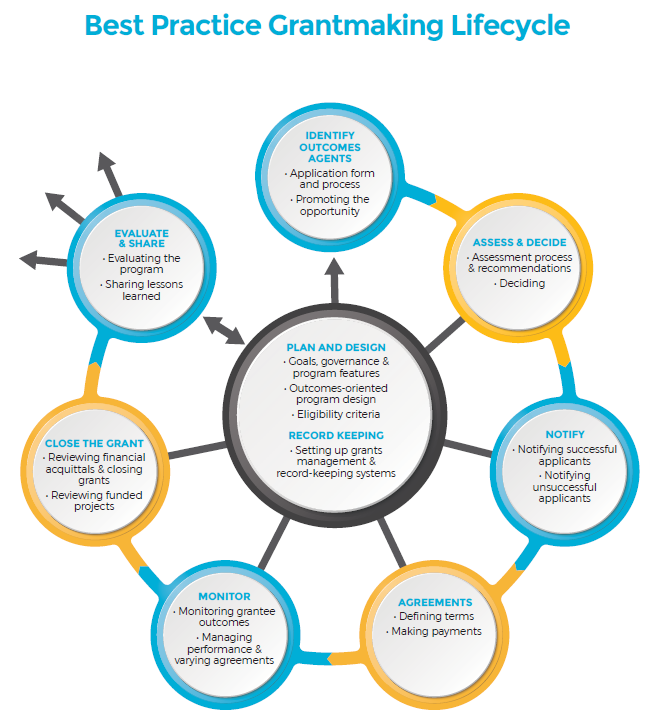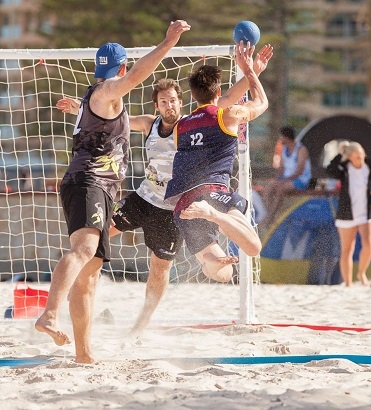Identifying outcomes agents: How to target grantseekers to reach your goals

By Josh Presser, special projects manager, Smarty Grants
How do you find organisations with the right capabilities and experience to deliver your desired outcomes? How do you ensure that applicants who apply for your grant opportunity meet your eligibility requirements the first time and submit high quality applications?

About this help sheet
Being better able to identify outcomes agents means more effectively targeting the grantseekers who are best placed to deliver the outcomes you want. The more finely tuned your targeting, the less time you’ll need to spend sifting through ineligible or unsuitable applications, and the less time grantseekers will spend applying for grants for which they are ineligible or unsuited.
It’s something all grantmakers should be aiming for after having established the foundations of a great grants program through good planning and design, and by setting up the right kind of grants management and record-keeping systems.
That’s why ‘identifying outcomes agents’ is the crucial third step in the SmartyGrants grantmaking lifecycle.
This help sheet will walk you through some of the considerations for grantmakers during this stage of the grantmaking lifecycle, with a focus on maximising eligible, high-quality grants applications.
But first, the fundamentals

Identifying outcomes agents can’t happen until you’ve first defined your eligibility criteria and articulated them in your program guidelines. This happens at the very start of the process, during the ‘plan and design’ stage
Eligibility and assessment criteria
are your opportunity to specify exactly what qualities, skills and experience you require from potential applicants. Most of your eligibility and assessment criteria will flow from the outcome goals of your program.
Clear and accessible program guidelines that plainly set out what you will and won’t fund are critical for ensuring high eligibility rates and quality applications.
Good guidelines also help grantseekers to find the information they need from you without assistance, reducing enquiries and freeing up your resources for other activities.
The help sheet 'Best practice for writing grants guidelines' is a great starting point.
‘Plan and design’ is the first stage of the SmartyGrants grantmaking lifecycle. This stage is all about defining the ‘why’ and ‘how’ of your program.
‘Plan and design’ informs all the decisions you make during the subsequent stages of the lifecycle (including identifying outcomes agents).
Managing applications and processes to target outcomes agents
Your application process can help to maximise the number of eligible, high quality applications you receive and allow you to more easily filter out ineligible or unsuitable applications.
Following are some of the issues and options you need to consider when designing your application process.
Will your application process have one stage or two? In a two-stage application process, applicants typically submit a brief initial expression of interest (EOI) containing eligibility information and a high-level project proposal. An initial assessment is undertaken, and shortlisted applicants are then invited to submit a second, more detailed application.
A two-stage process can be useful for large or complex grants programs that have clear selection criteria and typically receive a large volume of applications. The main benefit of a two-stage process is that nobody has to waste time and effort writing or assessing lengthy, ineligible or unsuitable applications.
The help sheet ‘Two-stage applications’ provides more information on the benefits and risks of this approach.

As the name suggests, an open competitive grant round is open to anyone and advertised widely to the public. Open rounds are the most common type of grant round.
The benefits of open rounds are that they are fair and transparent; they allow all eligible applicants an equal opportunity to apply for a grant; and they generate maximum volume and diversity of applications.
Restricted grants rounds are competitive too, but they differ from open rounds in that application is by invitation only. Restricted rounds might be considered where the eligibility and selection criteria are very specific (e.g. the grantmaker requires highly specialised skills or expertise); where timeframes are very tight; or where the number of prospective grantees in the marketplace is limited. SmartyGrants allows users to create private grant rounds. Private rounds don’t appear on the grantmaker’s applicant homepage, and only those applicants to whom the grantmaker sends a private URL can apply.
A direct selection process is a closed process whereby the grantmaker approaches an existing grant recipient and assesses their capacity to deliver a program or project. The assessment may be made based on their performance to date. A direct selection process is sometimes used when an existing program or project is being extended or expanded.
How will you handle ineligible applications? Will you give applicants a chance to correct errors and provide additional documentation, or will you reject all ineligible applications out of hand?

If timeframes are tight or if you generally attract applications from highly professional and experienced grantseekers, you might choose a hard-line policy. The obvious benefit of this approach is efficiency; however, the risk is that you might exclude otherwise high-quality applications that contain a small error, and you might disadvantage less experienced applicants.
If you work with less experienced grantseekers, or if you’re aiming to build grantseeker capability, or you want to maximise the number of eligible applications, you might choose to give applicants a chance to resolve any eligibility issues.
‘…we do the talking prior to submission for the complex applications, and we also do an eligibility check when submitted and reopen forms and give the applicant a chance to correct the mistake that might make the application ineligible.’ – Peter Cornish

‘...we also re-open applications during the eligibility check if they have missed a mandatory document, etc. but were otherwise eligible.’ – Kate Mocsay, Logan City Council
To guard against accusations of giving preferential treatment, it is important that your policy and process for managing ineligible applications is well documented (internally and externally) and applied consistently.
Providing information and assistance to prospective grant applicants is key to receiving eligible and high-quality applications. Grantmakers consistently report that if they engage with grantseekers before submission, they receive higher quality applications.
‘We’re working hard to have people speak with us first. We advise on anything from applicants running a project pitch by us, to explaining what applying for a grant is or how to brainstorm a project for first time applicants…’ - Kate Mocsay, Logan City Council
Assistance can take many forms, including frequently asked questions (FAQ) sheets, a helpdesk or contact person, workshops, and individual meetings with grantseekers. The level of assistance and support you provide to grantseekers will depend on the size and complexity of your program, and the level of capability and experience of your intended grant recipients.
For example, if your program is small and fairly simple, or if you deal mainly with experienced professional grantseekers, you are unlikely to need to offer high-intensity support. Conversely, if your program is new or complex, or if you deal mainly with inexperienced grantseekers, or your goal is to build grantee capability, then you may consider offering more intensive support.
‘Our focus is equally about funding projects while building capacity in the community to write/apply for funding well. It’s changed up the way we see applications being submitted, their eligibility and overall success.’ – Kate Mocsay, Logan City Council
To guard against perceptions of preferential treatment, clearly document your policy and processes for providing assistance to prospective applicants (including any special access and equity measures) in your program guidelines and your internal policy and procedure manuals (e.g. assessor guidelines). Ensure that they are applied consistently.
Once you have all of your other processes sorted out, you can use your application forms to reflect eligibility and tighten your targeting of outcomes agents.
A well-designed application form can help applicants to submit eligible, high quality applications, and it can also reduce the number of ineligible applications submitted.
SmartyGrants allows users to build powerful online application forms which can prevent applicants from submitting ineligible applications. Below are some suggestions for SmartyGrants users to drive up eligibility rates through form design.
- Include an eligibility checklist or questions at the start of your form
- Use validation settings to make the eligibility question(s) mandatory, or to specify required responses
- Use conditional logic to create and show a message that informs ineligible applicants of their ineligibility, and directs them back to your program guidelines document.

‘Make sure eligibility requirements are included in the form (not just in an attachment) and make sure they’re clear… You could even make this a mandatory checklist on the first page of your application form.’ – Jon King, Community Broadcasting Foundation
Promoting grants for the ‘perfect’ recipient
The success of your grants program depends on attracting applications from those grantseekers who are best placed to deliver the results you want – they are the ‘outcomes agents’. The more effectively you target the right grantseekers, the less time you and applicants will spend on ineligible or unsuitable applications.
Some key considerations for grantmakers looking to promote their grants program are as follows.

What does your perfect grantee look like? By this point in the process you should have a good idea of the types of grantees you are seeking to target.
The communications channels and language you use must be appropriate for your target audience. For example, if you are targeting diverse grass roots community groups, you might choose ethnic media and specific social media channels. You might translate your guidelines into community languages or communicate through intermediaries such as ethnic communities councils and community leaders.
Key information about your grants program includes round opening and closing dates, intended program outcomes and selection criteria.
‘If ineligible applicants who will never be eligible apply, you can review how you can more clearly deter ineligible applicants before they start.’ – Jon King, Community Broadcasting Foundation
Unless your grants program is completely new, it’s useful to reflect on any common questions or issues grantseekers had last time, and to incorporate key lessons from previous rounds into your promotion strategy. For example, if you previously received a large number of ineligible applications, review your guidelines and communications, and see if you can improve your messaging and promotions strategy to address these issues.